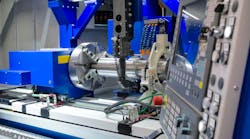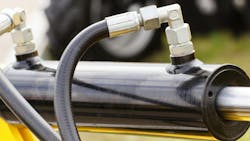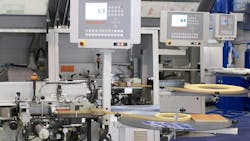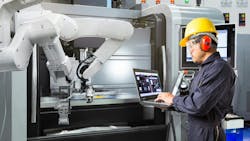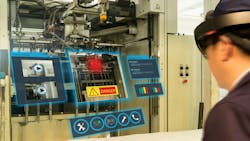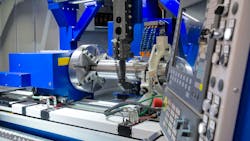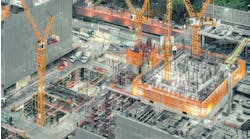Low-Maintenance Industrial Machinery Rely on Intelligent Motion Systems
Industrial machinery is under increasing pressure to deliver performance without disruption. As industries advance, equipment must meet not only performance standards but also new expectations for longevity and minimal upkeep.
Designing low- or no-maintenance machinery has become essential for achieving these goals, offering engineers and operators a way to extend equipment life, reduce downtime and optimize operational efficiency.
Moving beyond traditional designs requires the integration of durable components, intelligent control systems and predictive technologies, all working together to create smarter and more resilient motion systems.
New Design Techniques Reduce Maintenance for Modern Motion Control Systems
Motion systems are vital to the function of industrial operations. However, they are also exposed to constant physical stresses, vibration, contamination and environmental variability, which can quickly degrade traditional components. Low-maintenance designs directly address these challenges.
By incorporating advanced materials and real-time monitoring, today’s fluid power and other motion control systems can operate reliably for longer periods without the constant interventions that slow production and strain maintenance teams.
Hydraulics and pneumatics — which once required frequent seal checks and fluid maintenance — can now benefit from intelligent designs that anticipate wear and adapt to operational demands before problems escalate.
The Benefits of Leveraging Low-Maintenance Technologies
One of the most critical advances supporting low-maintenance motion systems is the adoption of ultrasonic clamp-on flow meters. Traditional flow measurement devices — especially those used in hydraulic and pneumatic applications — relied on mechanical parts that inevitably wore out over time.
By contrast, ultrasonic clamp-on meters measure the velocity of fluids from outside the pipe. This eliminates direct contact and therefore the typical mechanical wear. Their maintenance-free operation makes them ideal for environments where consistent monitoring of hydraulic or pneumatic fluid flow is central to system performance.
Incorporating a heavy-duty flow meter of this type into fluid systems adds another layer of protection. Operators can detect blockages, leaks or flow anomalies without invasive inspections, allowing problems to be addressed swiftly with minimal disruption to production.
Another significant contributor to low-maintenance design is the advancement of programmable logic controllers (PLCs) integrated with Industrial Internet of Things (IIoT) capabilities. Traditional systems often relied on fixed maintenance schedules, leading to unnecessary interventions or unexpected failures.
With IIoT integration, PLCs collect continuous data streams from hydraulic pumps, pneumatic valves and electromechanical drives. This real-time insight allows operators to adapt system behavior dynamically, correcting anomalies before they impact operation and vastly reduce unplanned downtime.
AI and Machine Learning Enable Shift to Predictive Maintenance
Artificial intelligence (AI) has further reshaped how maintenance strategies are developed and implemented. By applying machine learning (ML) algorithms to the vast data collected by IIoT-enabled motion systems, AI platforms can predict maintenance needs with remarkable accuracy.
Instead of depending on visual inspections or performance drops, AI analyzes subtle changes in vibration, pressure, fluid flow and temperature to detect early indicators of wear.
In a hydraulic circuit for instance, AI might identify seal degradation by recognizing a gradual increase in pressure variability. In pneumatic networks, early-stage valve leakage can be flagged long before it affects system efficiency.
Similarly in electromechanical drives, AI can detect the slight rise in vibration that often precedes bearing failure.
This shift to predictive maintenance allows industries to plan interventions precisely when needed, avoiding both premature service and costly breakdowns. It transforms maintenance from a reactive burden into a strategic tool for maximizing uptime and resource efficiency.
Augmented Reality Enhances Data Analysis and Maintenance Decisions
While advanced sensors and AI provide vital data, making that information accessible and actionable is equally important. Augmented reality (AR) platforms can now play a key part in simplifying system interaction. Operators can use AR interfaces to visualize real-time data overlaid on machinery, offering clear insights into equipment status without stopping operations or opening panels.
For example, an operator assessing a hydraulic press could instantly view internal fluid pressure, actuator performance and temperature trends through a tablet or AR headset. This direct visibility helps maintenance teams make faster, better-informed decisions, preventing small issues from becoming major failures and reducing downtime even further.
Foundational Design Choices Support Long-Term Reliability
In addition to integrating new technologies, building low-maintenance machinery requires smart mechanical design from the outset. Self-lubricating materials are crucial in this regard.
Bearings, bushings and seals made from advanced composites such as PTFE-infused polymers reduce friction naturally and extend component life without the need for constant greasing. These components are particularly valuable in hydraulic cylinders, pneumatic actuators and linear drives that experience high duty cycles.
Modular design strategies also support maintenance reduction. Machinery composed of modular hydraulic manifolds and easily replaceable motor assemblies allow targeted interventions. When a component does eventually reach its service limit, it can be replaced without dismantling an entire system, minimizing downtime and labor costs.
Equally important is proper load matching. Oversizing pumps, actuators and motors relative to expected operational loads reduces mechanical strain and thermal stress. Systems that are correctly sized not only operate more efficiently but also avoid the hidden fatigue that silently shortens service life.
Practical Applications of Low- and No-Maintenance Systems Across Industries
In manufacturing, assembly lines now feature robotic arms with self-lubricating joints and electromechanical drives monitored by embedded vibration sensors. These lines maintain high throughput with significantly reduced maintenance requirements.
In mining and heavy equipment, hydraulic systems equipped with ultrasonic clamp-on meters and predictive analytics platforms operate reliably even under harsh conditions. Early identification of flow inconsistencies or pressure drops allows for scheduled interventions, preserving uptime in environments where field repairs are costly and dangerous.
Logistics and warehousing facilities rely on conveyor systems powered by electromechanical drives connected to IIoT networks. Predictive maintenance — triggered by real-time motor diagnostics and AR-assisted inspections — keeps goods moving without unexpected stoppages.
Even aerospace and defense sectors where precision is of the utmost importance have embraced low-maintenance motion systems. Testing rigs now use modular hydraulics and advanced monitoring tools to conduct thousands of test cycles with minimal human intervention.
The industrial world is moving rapidly toward a future where low- or no-maintenance machinery is the norm. Integrating durable, self-sufficient components with real-time monitoring and predictive intelligence is key to building systems that offer both performance and resilience.
The future belongs to motion systems that can think, adapt and perform without constant human oversight — creating safer, smarter and more sustainable industrial environments.
This article was written and contributed by Izzy Rivera, HVAC & Gas Service Manager at Emerson.
